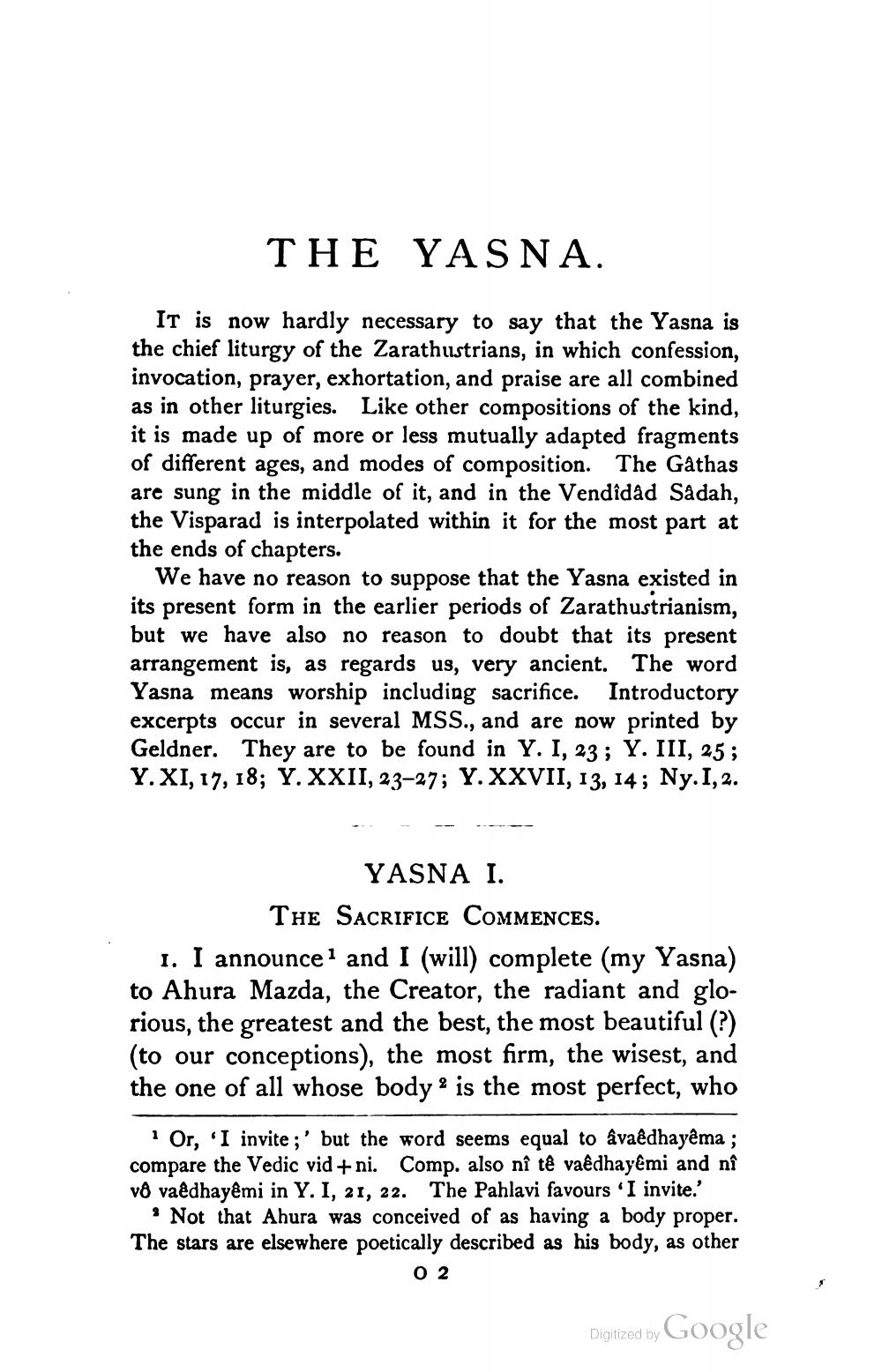________________
THE YASNA.
It is now hardly necessary to say that the Yasna is the chief liturgy of the Zarathustrians, in which confession, invocation, prayer, exhortation, and praise are all combined as in other liturgies. Like other compositions of the kind, it is made up of more or less mutually adapted fragments of different ages, and modes of composition. The Gathas are sung in the middle of it, and in the Vendidad Sådah, the Visparad is interpolated within it for the most part at the ends of chapters.
We have no reason to suppose that the Yasna existed in its present form in the earlier periods of Zarathustrianism, but we have also no reason to doubt that its present arrangement is, as regards us, very ancient. The word Yasna means worship including sacrifice. Introductory excerpts occur in several MSS., and are now printed by Geldner. They are to be found in Y. I, 23 ; Y. III, 25; Y.XI, 17, 18; Y. XXII, 23-27; Y. XXVII, 13, 14; Ny.I, 2.
-
-
--
--
YASNA I.
THE SACRIFICE COMMENCES. 1. I announce and I (will) complete (my Yasna) to Ahura Mazda, the Creator, the radiant and glorious, the greatest and the best, the most beautiful (?) (to our conceptions), the most firm, the wisest, and the one of all whose body is the most perfect, who
1 Or, I invite;' but the word seems equal to avaêdhayema; compare the Vedic vid + ni. Comp. also nî tê vaêdhayemi and nî vô vaèdhayemi in Y. I, 21, 22. The Pahlavi favours 'I invite.'
Not that Ahura was conceived of as having a body proper. The stars are elsewhere poetically described as his body, as other
02
Digitized by
Digitized by Google




